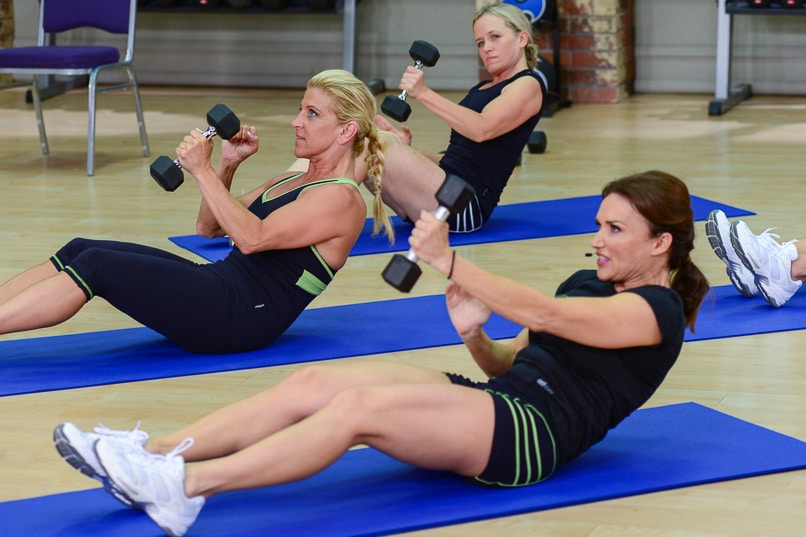
The key is to reduce your body fat percentage through fat-burning exercise, not by doing umpteen crunches. Doing hundreds of crunches boosts abdominal endurance and burns a few calories but it won’t burn significant amounts of body fat that may be contributing to a protruding lower belly.
It is important to do focused abdominal work, but is it possible to specifically target the lower abdominals through exercise?
Understanding Your Abdominal Musculature
There are four sets of muscles that make up your abs. The paired muscles that run down the center of your abdominals are called the rectus abdominis. If your body fat is low and you’ve strengthened these muscles through training, you may see some ripples in that area.
Adjacent to the rectus abdominis on each side are two sets of muscles called the external obliques and internal obliques. They run diagonally in a v-shape along each side of your abdomen. The internal obliques lie beneath the external obliques. These muscles are important for rotating your spine.
Finally, there is the transverse abdominis muscle. This muscle lies deeper, forming a band around your middle, helping to pull everything in like an invisible girdle. Who wouldn’t want that?
Can You Target Your Lower Abdominals?
You can target the abdominal oblique muscles to some degree with specific exercises but you can’t specifically target the lower portion of your rectus abdominis since it’s one big muscle that extends from your ribs to your groin. Exercises targeting your rectus abdominis muscle work the entire muscle, not just part of it. So it’s a fallacy that you can target the lower abs independently of the upper abdominals.
Why You Don’t Want to Do Targeted Lower Abdominal Exercises Anyway
Even if you could target the lower abs, it wouldn’t be the best way to pull in that pooch. You’re better off doing exercises that work your entire core including your back to help strengthen all the muscles that wrap around your abs and spine. When you’re doing these exercises, it helps to mentally focus on the muscles you’re working to maximize their activation rather than letting your mind wander. Of course, focus is important for any type of workout.
That tummy pooch can also be improved by working on your posture – and core exercises help with that. Some people also have abdominals that protrude forward because of lumbar lordosis, the curvature of the lower part of the back that pushes their lower tummy forward.
As mentioned, you’ll also need to work on reducing body fat if the primary problem is too much abdominal fat. Research suggests that high-intensity cardio may be better for incinerating tummy fat than moderate-intensity aerobics. Think high-intensity interval training, Tabatas etc rather than an hour-long moderate-intensity workout on the treadmill or elliptical machine.
Another Way to Engage Your Lower Abdominals
How much sitting do you do during the day? If you’re like most people – too much. All of that sitting is bad for your posture and does nothing to engage your abdominal muscles. One way to do that is to replace your chair at work with a stability ball. When you sit on a stability ball, you place your torso in an unstable position that forces your abdominals to fire to stay balanced. It’s not going to replace core and abdominal exercises but it will give your abdominals a little activation.
It also helps if you remember to consciously suck in your abdominals throughout the day to keep them firing or sit on a stability ball. Doing these things will also improve your posture.
The Bottom Line?
You can’t really target your lower abdominals and it wouldn’t be the best approach to enviable abs anyway. Stick with high-intensity cardio, core exercises and challenging abdominal exercises. If you aren’t feeling the burn after doing a set, hold a dumbbell when you do some exercises like crunches for more resistance.
References:
J Strength Cond Res. 2011 Sep;25(9):2559-64. doi: 10.1519/JSC.0b013e3181fb4a46.
Related Articles By Cathe:
Abdominal Exercises: Are You Doing Too Many Reps?
Abdominal Training: Why Less Ab Work is More
Ab Training: Can the Quest to Get Defined Abdominals Lead to Back Pain?
Are Abdominal Crunches on a Stability Ball More Effective?

